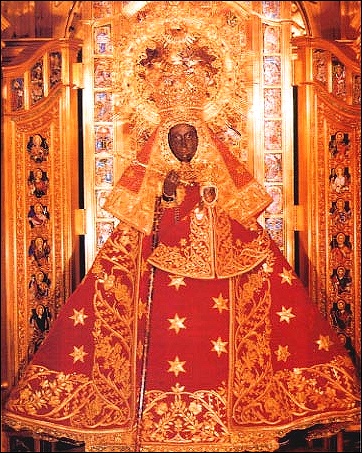The Dark Madonnas
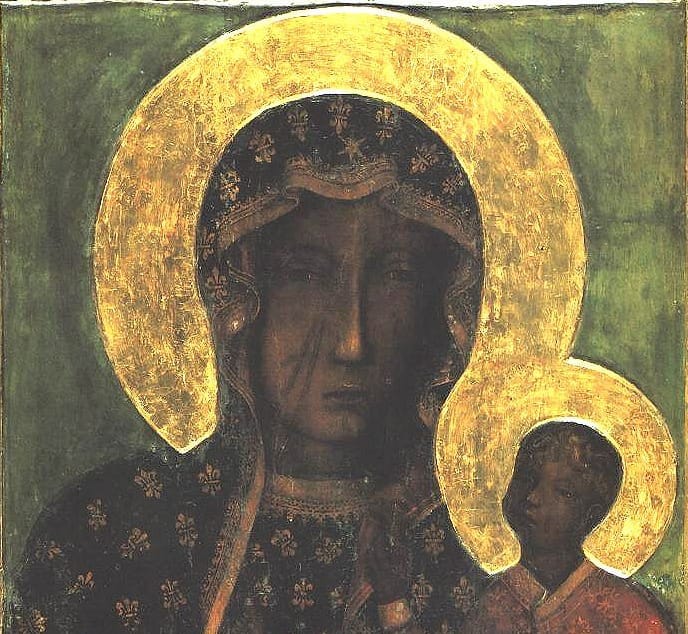
There are hundreds of Dark Madonnas (Virgin Marys) all over Catholic Europe, from Portugal to Poland, and a debate rages to this day about why they are so clearly Black. Some see them as echoes of a pre-Christian and pagan era, as if she is an incarnation of the Egyptian goddess Isis with her child Horus in her arms. Others prefer the explanation that until medieval times, the Virgin Mary was assumed to have Semitic features. After all, it is not so strange to think that over the centuries Jesus and Mary got whiter and whiter. But there at least a dozen other explanations, the most popular being that "blackness" was caused by candle soot.
The story is also entwined with Mary Magdalene and Les-Saintes-Maries-de-la-Mer - here
Some of the most famous Dark Madonnas are in the Cathedral of Le Puy-en-Velay, which was a major pilgrimage site from the early Middle Ages. The originals were burnt during the French Revolution and today they show replicas.
At Santa Maria de Montserrat just west of Barcelona in Catalonia is another famous Dark Madonna, "La Moreneta" (The Black Virgin):
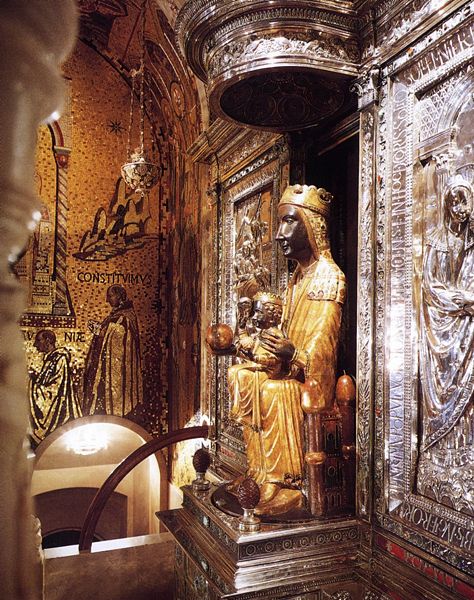
Montserrat Monastery is shown below. Heinrich Himmler is said to have believed that Montserrat was the Castle Montsalvat of the Holy Grail legend and he made a secret trip there during World War II.
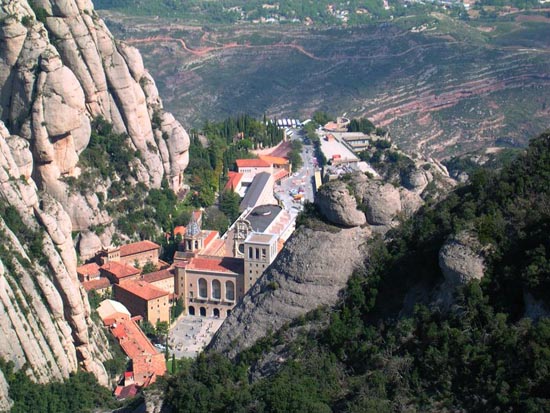
It is reassuring that an otherwise White culture should venerate her as the patron saint of Catalonia and other such places. Of course many of these Dark Madonnas are hidden away in church vaults, while it's the newer White Madonnas that go on display.
This has become controversial at Chartres. There is a White Madonna named Notre-Dame la Blanche behind the altar and their famous Dark Madonna, Notre Dame Sous Terre (Our Lady Underground), is below in the crypt - it too is a replica after the original was destroyed in the French Revolution and that replica was in turn replaced in 1857 and again in 1976. But the controversy, which arose in 2013, concerns another Dark Madonna - known as Our Lady of the Pillar (after the more famous original in Zaragoza, Spain) - when it was repainted in lighter colors since, technically, she is supposed to combine the White Madonna and the Black Madonna. The repainting annoyed conservatives. This photo shows her before the repainting:
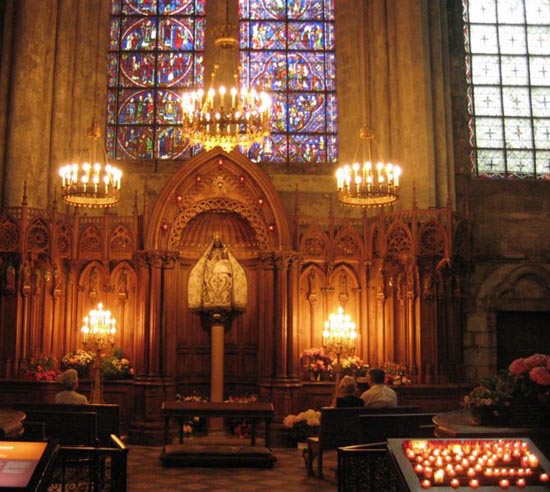
Finally, below, there is the Virgin of Guadalupe, in the Real Monasterio de Nuestra Señora de Guadalupe in Extremadura, Spain. This is the Black Madonna to whom Columbus gave thanks in 1492 after he knew his expedition to the New World would be financed. Extremadura was the province from which Hernán Cortés came from - the Extremadura madonna inspired Mexico's Virgin of Guadalupe, also considered to be a Dark Madonna.
